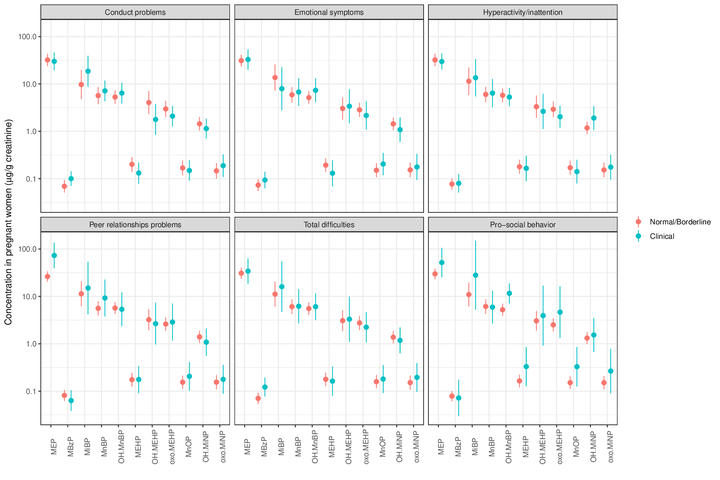Prenatal and early postnatal phthalate exposure and child neurodevelopment at age of 7 years – Polish Mother and Child Cohort

Abstract
Phthalates are among the most frequently investigated environmental chemicals influencing children’s health and particularly their neuropsychological development. However, the reported effects of these compounds on child behavior, cognitive and psychomotor outcomes are not fully consistent. The aim of this study is to evaluate the associations between prenatal and early postnatal phthalate exposures and child neurodevelopment at age of 7 years. A total of 134 mother-child pairs from Polish Mother and Child Cohort (REPRO_PL) constitute the basis for current analysis. Eleven phthalate metabolites were measured in urine samples collected from mothers in the 3rd trimester of pregnancy and from children at the age of 2 years. Child neuropsychological development at early school age (7 years) was assessed by both the Strengths and Difficulties Questionnaire (SDQ) filled by mothers and the Polish adaptation of the Intelligence and Development Scales (IDS) performed by psychologists. Mono-ethyl phthalate (MEP) concentration during pregnancy was significantly associated with increased risk of peer relationship problems in SDQ (OR = 2.7, p = 0.03). The results of the IDS analyses focused on child’s cognitive and psychomotor development are not fully conclusive. Negative associations were evident between some phthalates in early childhood period and fluid intelligence and cognition (MEP: β = −5.2; p = 0.006; β = −4.2; p = 0.006; mono-n-butyl phthalate (MnBP): β = −4.9; p = 0.03; β = −4.0; p = 0.03; respectively), while positive associations have been found in the prenatal period (mono-2-ethyl-5-oxo-hexyl phthalate (oxo-MEHP): β = 3.6; p = 0.03 for fluid intelligence; β = 2.9; p = 0.03 for cognition). Further studies are required in order to elucidate which are the most critical periods of phthalate exposure on children’s neurodevelopmental outcomes.
Highlights
- Prenatal and early postnatal phthalate exposure are associated with neurodevelopment.
- Prenatal MEP concentrations are associated with peer relationship problems.
- Postnatal MEP and MnBP concentrations are inversely associated with cognition.
- Further studies are needed to understand the most critical periods of exposure.